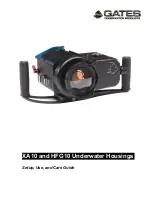
EMF measures
Electromagnetic fields may pose as yet unknown risks to health:
-
effects on the health of others in the vicinity, e.g. wearers of pacemakers and hear-
ing aids
-
wearers of pacemakers must seek advice from their doctor before approaching the
device or any welding that is in progress
-
for safety reasons, keep distances between the welding cables and the welder's
head/torso as large as possible
-
do not carry welding cables and hosepacks over the shoulders or wind them around
any part of the body
Specific hazards
Keep hands, hair, clothing and tools away from moving parts. For example:
-
Fans
-
Cogs
-
Rollers
-
Shafts
-
Wirespools and welding wires
Do not reach into the rotating cogs of the wire drive or into rotating drive components.
Covers and side panels may only be opened/removed while maintenance or repair work
is being carried out.
During operation
-
Ensure that all covers are closed and all side panels are fitted properly.
-
Keep all covers and side panels closed.
The welding wire emerging from the welding torch poses a high risk of injury (piercing of
the hand, injuries to the face and eyes, etc.).
Therefore always keep the welding torch away from the body (devices with wire-feed
unit) and wear suitable protective goggles.
Never touch the workpiece during or after welding - risk of burns.
Slag can jump off cooling workpieces. The specified protective equipment must therefore
also be worn when reworking workpieces, and steps must be taken to ensure that other
people are also adequately protected.
Welding torches and other parts with a high operating temperature must be allowed to
cool down before handling.
Special provisions apply in areas at risk of fire or explosion - observe relevant
national and international regulations.
Power sources that are to be used in areas with increased electric risk (e.g. near boilers)
must carry the "Safety" sign. However, the power source must not be located in such
areas.
Risk of scalding from escaping coolant. Switch off cooling unit before disconnecting
coolant flow or return lines.
Observe the information on the coolant safety data sheet when handling coolant. The
coolant safety data sheet may be obtained from your service centre or downloaded from
the manufacturer's website.
Use only suitable load-carrying equipment supplied by the manufacturer when transport-
ing devices by crane.
-
Hook chains and/or ropes onto all suspension points provided on the load-carrying
equipment.
-
Chains and ropes must be at the smallest angle possible to the vertical.
-
Remove gas cylinder and wire-feed unit (MIG/MAG and TIG devices).
11
EN
Содержание WF 25i Case D200
Страница 2: ......
Страница 16: ...16...
Страница 17: ...General 17...
Страница 18: ...18...
Страница 22: ...22...
Страница 23: ...Controls connections and mechan ical components 23...
Страница 24: ...24...
Страница 32: ...OPT i WF Stand ard control panel 1 9 8 5 6 10 11 12 2 3 4 7 14 13 32...
Страница 37: ...Installation and commissioning 37...
Страница 38: ...38...
Страница 49: ...2 4 STOP OK 3 1 3 Setting the brake D300 device 1 4 5 STOP 6 7 3 1 2 1 2 1 2 2 4 STOP OK 3 1 3 49 EN...
Страница 52: ...52...
Страница 53: ...Troubleshooting maintenance and disposal 53...
Страница 54: ...54...
Страница 61: ...Technical data 61...
Страница 62: ...62...
Страница 65: ...65 EN...
Страница 66: ...66...
Страница 67: ...67 EN...












































